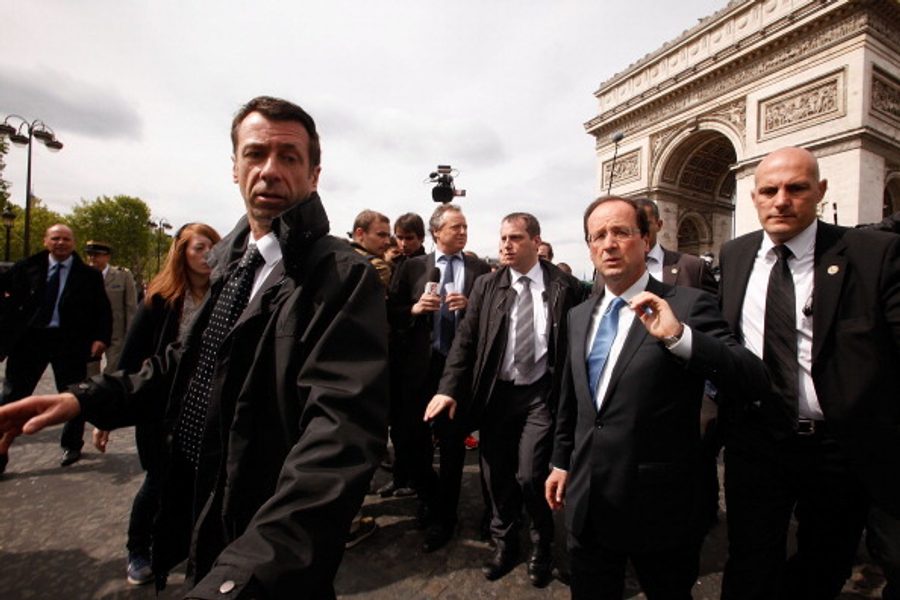
Writing in the New York Times on Friday, Stephen Castle described French Prime Minister François Hollande’s overtures to British Labour Party leader Ed Miliband. Hollande is France’s first Socialist leader since François Mitterrand left office 17 years prior. According to Castle, Hollande sees himself as the leader of a potential resurgence of the European center-left, capable of pushing a more expansionist economic agenda.
To attempt a crude historical overview: the French Communist Party and the more moderate Socialists battled for hegemony in the post-war period, with the two forces eventually forging a shaky compact under the banner of a common electoral program. After a narrow electoral defeat in 1974, the Socialists went it alone and won in 1981. Despite the lack of Communist involvement, Mitterrand’s “110 Propositions for France” were sweeping, filled with interventionist Keynesian proposals that would be unthinkable today.
After two years in office this all changed. Mitterrand’s made a turn towards neoliberalism. Fighting inflation and remaining competitive within the European Monetary System, rather than pursuing full employment policies and expanding social programs, became priorities.
The sudden transformation wasn’t due to a personal evolution in Mitterand’s political ideology, but rather a broader structural shift that has happening across the world. Social democracy faced the structural crisis in the 1970s that Michal Kalecki, author of “The Political Aspects of Full Employment,” predicted decades earlier. Contra Leninist predictions, near-full employment and a cushy welfare state made workers bold, not docile. They made militant wage demands. Capitalists were able to keep up with them when times were good, but when stagflation hit — the intersection of poor growth and rising inflation — capital suffered from a crisis of profitability. Neoliberalism’s success came in curbing this inflation and restoring profits through a vicious offensive against the working class. Social democratic parties that sought to administer advanced economies in the neoliberal age, especially with the pressures wrought by globalization, had to adapt their platforms to this new reality.
The dilemma continues to this day. It’s one that Castle hints at in his piece:
According to one theory, the left’s problem is that Europe is divided between those who want austerity and structural reforms and those who are anti-austerity and anti-reform. If it is to make a breakthrough, the left needs to position itself against austerity but also in favor of reform.
At face value, those lines remind me of a Thomas Friedman aphorism – something to the tune of “The grass isn’t greener on the other side, but at least they have grass.” But it gets at the impossibility of the center-left’s position. First, they want a milder form of austerity, but they’re reliant on forces to get elected that are staunchly anti-austerity. The cuts that they are able to force through end up undermining the very social base that elected them in the first instance. They do want less of these cuts than the center-right and they are more open to using the state to stimulate growth, but they are structurally constrained by new economic realities and, tasked with the burden of governance, are forced to act “responsibly” and maintain stable conditions for accumulation and private investment.
Is there such a thing as a progressive neoliberalism in the developed world? The record of Third Way administrations indiciates there isn’t and that the way forward out of crisis lies with the radicals, not the moderates, in the Left’s camp.
Bhaskar Sunkara is the president of The Nation magazine and the founding editor of Jacobin. Follow him on Twitter: @sunraysunray.




